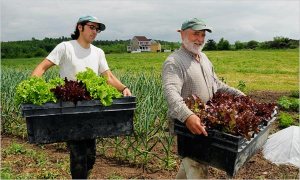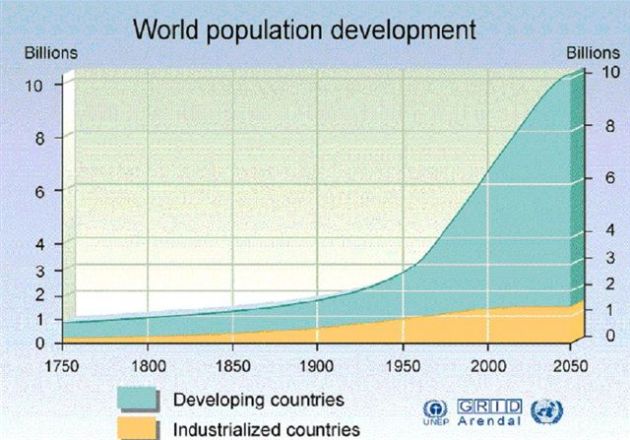What can be agreed upon by every person in the world is that food production needs to increase if we are going to be able to the feed 9 billion people that we are projected to have by the year 2050. Where the difference of opinions comes in is how to do it. One way suggests that adaptation of plants, such as modification of corn to need less water, needs to be done, as crop growth seems to be inefficient. The other side worries about our environmental impact. Much of what we saw at Whole Foods reflected this in our community. Ideally, we would be able to have a surplus of organically grown food that is both affordable and abundant enough to feed a world of 9 billion people. What is more realistic (and I’m not trying to be pessimistic here) is that we will either have to give up organically grown food or we will not be able to support 9 billion people.
However, with the mission that Whole Foods is promoting is the use of local farmers through the Whole Trade program. What this program does that is unique is that it only buys locally grown tomatoes. The process to become USDA certified organic is a very lengthy and costly process, which many local farmers simply cannot afford. This program is then able to buy these products and then sell them in Whole Foods markets. From our visit, we saw that there was a surplus of tomatoes exclusively from this program. Whole Foods is also making a pledge by 2018 to not have any GMO (Genetically Modified Organisms) within their 365 (house brand) products. Clearly, Whole Foods is supporting our local farmers, cutting down on emissions from transportation, and making a commitment to the health and the quality of their products.
Unfortunately, Whole Foods also somewhat requires the commitment of its shoppers. When compared to either Wal-mart or Sam’s Club, prices are always remarkably higher. For example, at Whole Foods we saw tomatoes that were on the Whole Trade system and were tagged for having lower prices, and they were something like $3 per pound. The difference doesn’t seem like much, but compared to Wal-Marts offer of 99 cents per pound, Whole Food’s prices seems quite a bit higher then. What then makes this process difficult is the question is it really worth it? Is it worth an extra 2$ to eat organic tomatoes? For now, this remains a question many people must face. In the future, our production needs to grow, that is for sure, but if the growth were to be in the organic side of things rather than in the industrial side, it would be more sustainable as a whole for our community, and it would put an end to this struggle between organic and industrialized food.
-Will


Need to categorize this post under Real Food. Title needs to include FOOD, without it the title is too general. Will, make sure that you re-read your posts for clarity. It is often hard to understand what you mean. FOr example, “Whole Foods also somewhat requires the commitment of its shoppers; as compared to Wal-Mart and Sam’s club it is significantly more expensive.” Re-vise to: Compared to Wal-Mart and Sam’s Club which offers rock bottom prices, WF is significantly more expensive.” Including WF rather than “it” helps to clarify. You should insert an image in between your intro paragraph and your lead in to the WF discussion. Break up paragraphs with images to help reader. INclude references for what you read inserted into your text.
still need to re-categorize! Your title makes NO sense…
This is a very interesting write up! I think that there could be more pictures because the amount of text is overwhelming.